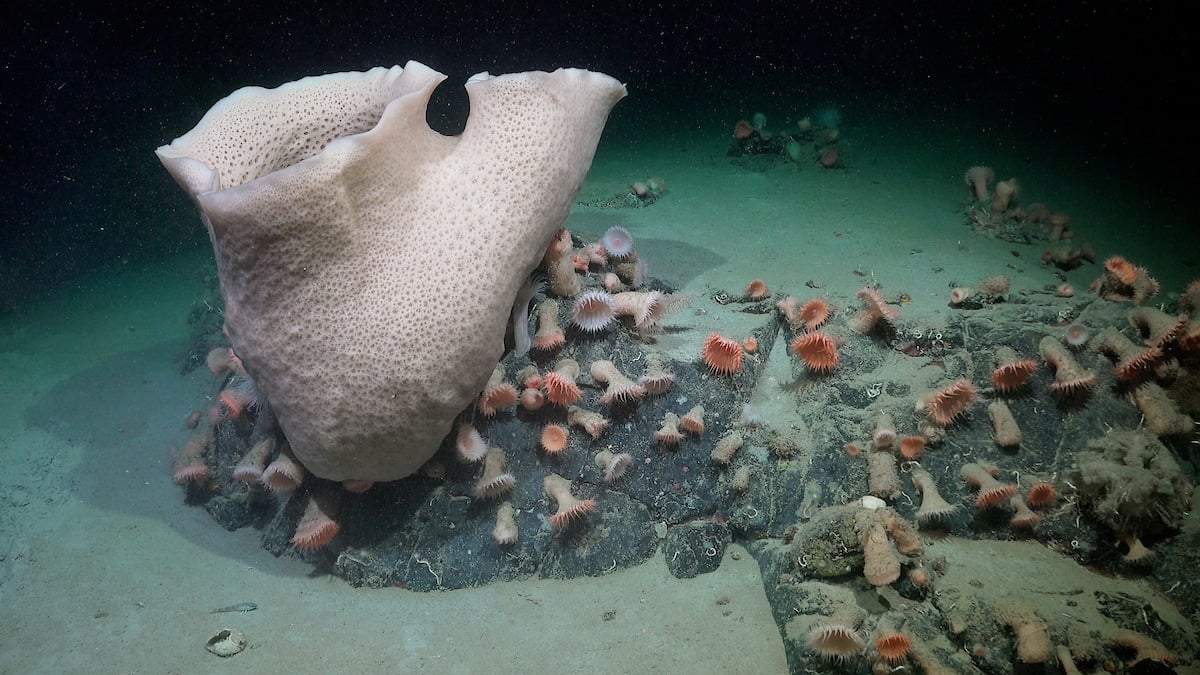

A hidden ecosystem untouched for centuries has been revealed beneath Antarctica after a Chicago-sized iceberg broke off the George VI Ice Shelf, exposing a marine world never seen before.
In early 2025, researchers aboard a science vessel quickly redirected their mission to explore the newly exposed region near the Antarctic Peninsula. The event offered a rare opportunity to study a marine ecosystem that had remained sealed beneath roughly 150 meters of ice.
Using a remotely operated underwater vehicle named SuBastian, the team sent cameras into the cold, clear water to examine the site where the iceberg had calved. What they found stunned them: a thriving community of marine life living in total darkness.
The international team discovered sponges, sea anemones, soft-bodied animals, and coral formations growing on the seafloor—many never seen in this region before.
“We seized upon the moment, changed our expedition plan, and went for it so we could look at what was happening in the depths below,” said Patricia Esquete, co-chief scientist of the expedition and a marine biologist at the University of Aveiro in Portugal. “We didn’t expect to find such a beautiful, thriving ecosystem.”
Scientists know little about what exists beneath Antarctica’s floating glaciers. These icy environments receive no sunlight and are cut off from falling nutrients that usually sustain marine life. Experts believe organisms in these regions depend on ocean currents flowing under the ice to deliver the food they need.
NEW: On January 13, when an iceberg the size of Chicago broke away from Antarctica’s immense George VI Ice Shelf, scientists in a nearby research vessel sailed to look at the seafloor that had suddenly been exposed—and were shocked to see an explosion of life.
Me @NatGeo
pic.twitter.com/Vwf1GN3QVg
— Dr Robin George Andrews
(@SquigglyVolcano) March 24, 2025
One of the most striking findings was a large sponge discovered 230 meters below the surface. Because sponges grow slowly—just a few centimeters per year—researchers say this one could be decades or even centuries old.
“Based on the size of the animals, the communities we observed have been there for decades, maybe even hundreds of years,” Esquete said.
For several days, SuBastian mapped the region, collected sediment cores, and gathered biological samples for further study.
This is likely the first time such a “comprehensive and interdisciplinary study like this was completed in a sub-ice shelf environment,” said Aleksandr Montelli, expedition co-leader from University College London.
Exploring beneath thick Antarctic ice comes with major challenges. GPS signals don’t reach these depths, forcing teams to rely on sound-based navigation. Extreme cold and high pressure make every step more complex.
The research team had initially set out to study the seafloor along the ice-ocean boundary. But when the iceberg calved, it opened a rare window into a long-hidden world.
“Being right there when this iceberg calved from the ice shelf presented a rare scientific opportunity. Serendipitous moments are part of the excitement of research at sea – they offer the chance to be the first to witness the untouched beauty of our world,” said Jyotika Virmani, executive director of the Schmidt Ocean Institute.
